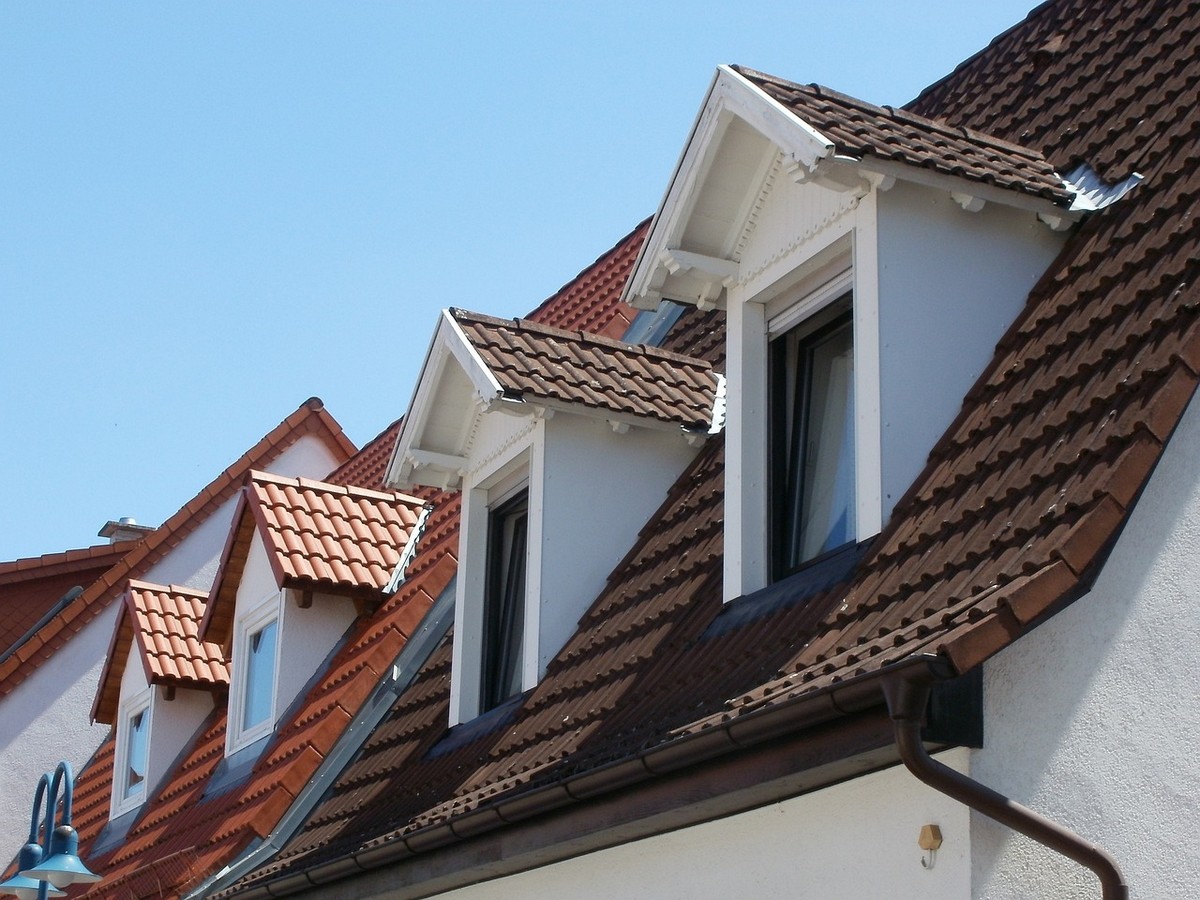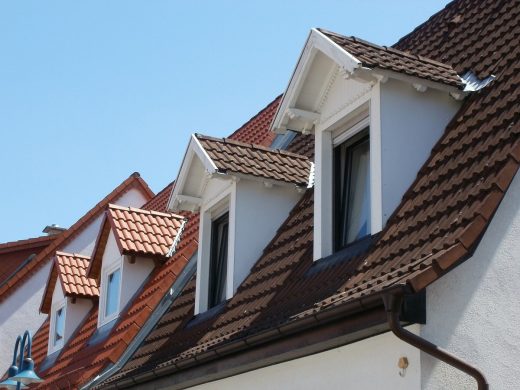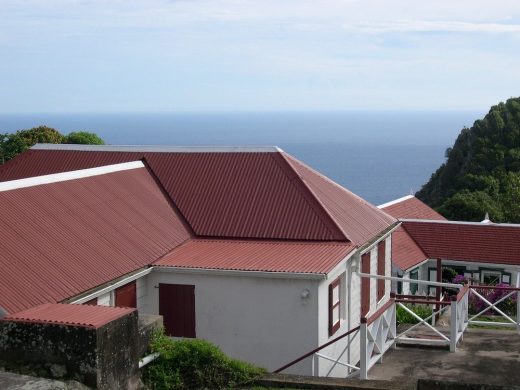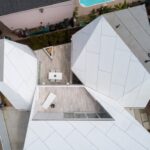How proper insulation impacts your roof, Avoiding mold spores in the attic, House upkeep, Building roofing
How Proper Insulation Impacts Your Roof
2 June 2024
Introduction
Your home’s roof is a critical component, shielding you and your loved ones from the elements
while safeguarding the structural integrity of your abode. However, the efficacy of this protective
barrier hinges significantly on an often-overlooked aspect: insulation. Insulation is pivotal in
maintaining a comfortable indoor temperature, but its impact extends far beyond that. Proper
insulation directly influences the health and longevity of your roof, a factor that homeowners
must prioritize.
Insulation is a crucial element in regulating the thermal environment within your home, but its
impact on the roof is often underestimated. By ensuring optimal insulation, you not only
enhance your living space’s comfort but also preserve the structural integrity of your roof,
ultimately extending its lifespan and minimizing costly repairs or replacements.
The Impact of Insulation on Roof Temperature
Extreme temperature fluctuations can wreak havoc on roof materials, subjecting them to
immense stress and accelerating their deterioration. Shingles, in particular, are susceptible to
cracking, warping, and premature aging when exposed to substantial temperature variations.
Proper insulation acts as a barrier, mitigating these drastic temperature shifts and creating a
more consistent temperature on the roof deck.
Without adequate insulation, the attic space becomes a conduit for heat transfer, allowing the
roof to experience the full brunt of external temperature extremes. During the summer, the roof
can become a veritable heat sink, absorbing and retaining excessive warmth, while in the
winter, it can rapidly dissipate heat, leading to potential ice buildup. This constant heating and
cooling cycle can cause materials to expand and contract, eventually compromising their
structural integrity.
By incorporating the correct insulation levels, you effectively decouple the roof from the interior
living space, minimizing the transfer of heat and maintaining a more stable temperature on the
roof deck. This consistent environment alleviates the stress on commercial roofing materials,
reducing the likelihood of cracking, warping, or other forms of premature deterioration.
Insulation and Moisture Control
Beyond temperature regulation, proper insulation plays a crucial role in moisture control, a
factor that can significantly impact the longevity of your roof. Inadequate insulation can lead to
moisture buildup within the attic space, creating an ideal environment for mold growth, wood rot,
and other forms of structural damage.
When warm air from the living space rises and enters the attic, it can condense on cooler
surfaces, such as the underside of the roof deck or framing members. This condensation can
accumulate over time, saturating insulation materials and promoting the growth of harmful mold
and mildew. Furthermore, excessive moisture can cause wood components to rot,
compromising the roof’s structural integrity and potentially leading to costly repairs or
replacements.
Proper insulation acts as a barrier, preventing warm air from entering the attic space and
minimizing the risk of condensation. By maintaining a consistent temperature within the attic,
insulation ensures that the roof deck remains cooler, reducing the likelihood of moisture buildup
and the associated problems that can arise.
Insulation and Ice Dams (for Colder Climates)
In regions that experience harsh winter conditions, ice dams can pose a significant threat to the
integrity of your roof. Ice dams are formed when heat from the attic space melts snow on the
roof, causing water to flow down and refreeze near the eaves, creating ice buildup. This buildup
can force water back under the shingles, leading to leaks, water damage, and potential
structural issues.
The primary contributor to ice dam formation is heat transfer from a poorly insulated attic. When
warm air escapes into the attic, it raises the temperature of the roof deck, causing snow to melt
and create conditions conducive to ice dam formation. Proper insulation helps prevent this heat
transfer, maintaining a cooler roof deck temperature and minimizing the risk of ice dams.
By investing in adequate insulation, you can effectively combat the formation of ice dams,
safeguarding your roof from the potential damage they can cause. This proactive measure
protects your home’s interior and extends your roof’s lifespan by preventing water infiltration and
subsequent rot or structural deterioration.
Energy Efficiency and Roof Longevity
The relationship between insulation and roof longevity extends beyond the direct impact on
temperature and moisture control. Proper insulation also contributes to energy efficiency, which
has a positive effect on the lifespan of your roof.
A well-insulated home requires less energy for heating and cooling, as the insulation is a barrier
against heat transfer. This reduced energy consumption translates to lower stress on your
home’s heating and cooling systems, resulting in fewer emissions and a smaller environmental
footprint.
However, the benefits of improved energy efficiency go beyond environmental considerations.
By reducing the workload on your HVAC systems, you effectively minimize the stress on your
roof. Excessive heat or vibrations generated by overworked HVAC units can contribute to the
premature deterioration of roofing materials, leading to cracks, warping, or other forms of
damage.
Investing in proper insulation and capitalizing on the associated energy savings alleviates the
burden on your home’s heating and cooling systems, indirectly extending the lifespan of your
roof. This synergistic relationship between insulation, energy efficiency, and roof longevity
underscores the importance of a holistic home maintenance and sustainability approach.
Insulation Options and R-Values
When it comes to insulating your attic and roof, homeowners have a variety of materials to
choose from, each with its unique properties and characteristics. Common insulation options
include fiberglass batts, blown-in insulation (such as cellulose or fiberglass), and spray foam
insulation.
Regardless of the material chosen, it is essential to consider the concept of R-value when
selecting the appropriate insulation for your home. The R-value represents the resistance to
heat flow, with higher values indicating better insulating properties. Factors such as climate,
desired energy efficiency, and local building codes will dictate the recommended R-value for
your specific situation.
Higher R-values are generally recommended in colder regions to combat heat loss and maintain
a comfortable indoor temperature. Conversely, lower R-values may be sufficient in warmer
climates, as the primary concern is preventing heat gain. Additionally, the type of insulation
material can influence the required R-value, as some materials are more effective insulators
than others.
When selecting insulation for your attic and roof, it is crucial to consult with a qualified
professional who can assess your specific needs and provide recommendations tailored to your
local climate, home design, and energy efficiency goals. By choosing the appropriate insulation
type and R-value, you can optimize the performance of your roof, extend its lifespan, and enjoy
the benefits of a comfortable and energy-efficient living environment.
DIY vs. Professional Insulation
For handy homeowners with experience in home improvement projects, the prospect of tackling
attic insulation as a DIY endeavor may seem appealing. Indeed, with proper research,
preparation, and adherence to safety protocols, motivated individuals can undertake some
insulation tasks.
However, it is essential to recognize the complexity and potential risks associated with
insulating your attic and roof areas. Improper installation can lead to gaps, voids, or
compression of the insulation, compromising its effectiveness and potentially negating the
intended benefits. Additionally, working in confined spaces, such as attics, can pose safety
hazards if proper precautions are not taken.
For these reasons, many homeowners opt to enlist the services of a qualified roofing contractor
specializing in insulation installation. Professional roofers possess the expertise, equipment,
and experience to ensure the insulation is installed correctly and meets all relevant building
codes and standards.
When searching for a reputable roofing contractor, it is essential to prioritize those with
extensive experience in insulation work. Seek recommendations from friends, family, or local
home improvement associations, and thoroughly research potential contractors by reviewing
online reviews, checking for proper licensing and insurance, and inquiring about their warranties
and guarantees.
While the upfront cost of professional insulation installation may be higher than a DIY approach,
the long-term benefits of energy efficiency, roof longevity, and peace of mind often outweigh the
initial investment. By entrusting your insulation needs to a qualified roofing professional, you can
rest assured that the job will be done correctly, maximizing the impact on your roof’s health and
overall home performance.
Conclusion
Proper insulation is an essential investment for safeguarding your roof’s structural integrity and
longevity by regulating temperature, controlling moisture, preventing ice dams, and enhancing
energy efficiency. Adequate insulation protects your roof from the damaging effects of extreme
temperature fluctuations and moisture buildup, minimizing the risks of premature deterioration.
It extends your roof’s lifespan by maintaining consistent temperatures on the roof deck, reducing
condensation, and lessening the burden on HVAC systems, ultimately avoiding costly repairs or
replacements. When choosing insulation, consider climate, desired energy efficiency, and local
building codes to determine the appropriate type and R-value. Homeowners should also weigh
the pros and cons of DIY installation versus hiring a qualified roofing contractor. Prioritizing
proper insulation is a proactive measure that enhances indoor comfort, energy efficiency, and
the long-term durability of this critical component, ensuring your roof continues to protect your
home for years to come.
Comments on this guide to How proper insulation impacts your roof article are welcome.
Sustainable Architecture News
Sustainable Building Design
Climate and biodiversity emergency
Climate and Biodiversity Emergency News: Landscape Architects
Eco Architecture
Contemporary Green Architecture Design
Comments / photos for the How proper insulation impacts your roof advice guide page welcome








